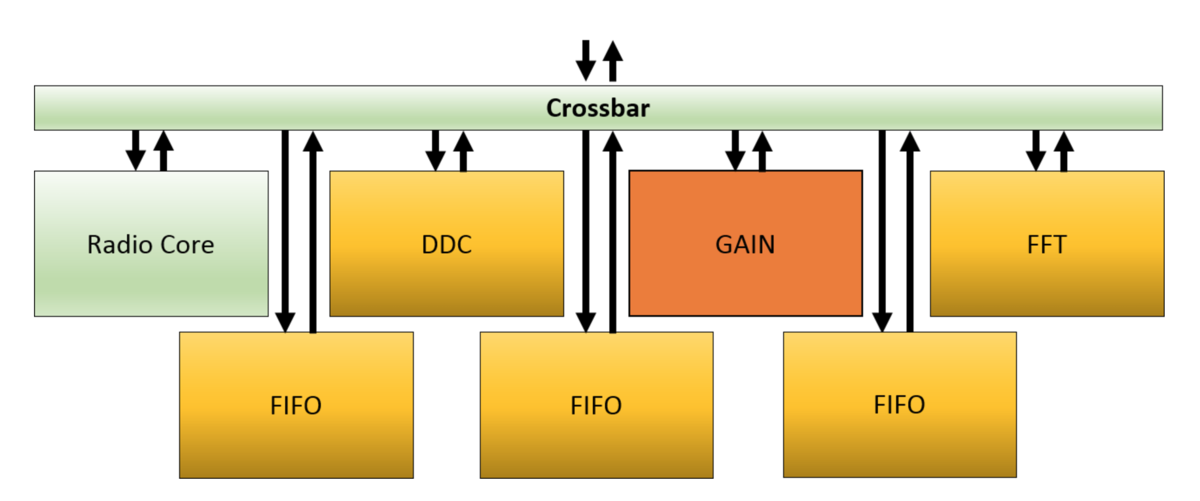Synchronizing USRP Events Using Timed Commands in UHD
Contents
Application Note Number
AN-TC
Revision History
| Date | Author | Details |
|---|---|---|
| 2020-02-10 | Sam Reiter | Initial creation |
Abstract
This AN discusses Timed Commands in UHD. We will explore usecases, theory of operation, and examples of timed command use in UHD 3.x.
Timed Commands: Overview and Usecases
- A
- B
- C
- D
- E
- F
- G
- H
- I
- J
- k
Clocking and Timekeeping in the USRP
In this section, we will cover several key topics relating to USRP synchronization and the use of timed commands in UHD.
CHDR Packet Types and Structure
CHDR or "Compressed Header" packets are a derivative of the VITA 49 (VRT) protocol. While the CHDR protocol is proprietary to USRP devices, mapping to and from VITA-49 is a trivial task. All packet routing in b2xx and "Gen 3" USRPs uses the CHDR protocol.
There are 4 types of packets used in the USRP:
- Data
- Flow Control
- Command
- Command Response
The type of packet is determined by the state of bits 63 and 62 in the CHDR header. See UHD Manual: Radio Transport Protocols for more information on CHDR structure.
All of these packet types have a single bit (61) used to denote whether an optional timestamp is included. If present, a timestamp is a 64-bit value representing an absolute time value. In this application note, we’re concerned with the use and functionality of command packets with a timestamp present, also known as “Timed Commands”.
Command Queue
PPS (Pulse Per Second)
PPS is a signal used by USRPs for time synchronization. Within the context of a USRP, a PPS signal is expected to have the following properties:
- 1Hz
- TTL Signal Levels
- 25% duity cycle
A USRP's PPS can be derived from a GPSDO automatically, from an externally supplied PPS signal, or via internal PPS synthesis (not supported in legacy USRPs).
A PPS trigger is used to coordinate time alignment events across multiple devices. For example, the USRPs internal sense of time (the vita_time) can be synchronously set/reset across multiple USRPs via UHD API calls such as
set_time_next_pps
set_time_unknown_pps
For further information on PPS and other common reference signals, see the UHD Manual: Device Synchronization.
Radio Core Block Timing
The Radio Core is the heart of the USRP's functionality. The radio core is responsible for controlling all TX and RX daughterboard components (synthesizer, signalpath, gain and attenuation elements, etc.), GPIO, setting up data streaming to/from DACs and ADCs, and related error handling.
In addition to the functionality listed above, the Radio Core is also responsible for maintaining the USRP's sense of absolute time. This absolute time value is stored as a 64-bit counter called the "VITA time" or vita_time in UHD. vita_time is incremented off of the FPGA's base clock and local to the Radio Core USRP, meaning that other RFNoC blocks can not reference this counter value directly.


